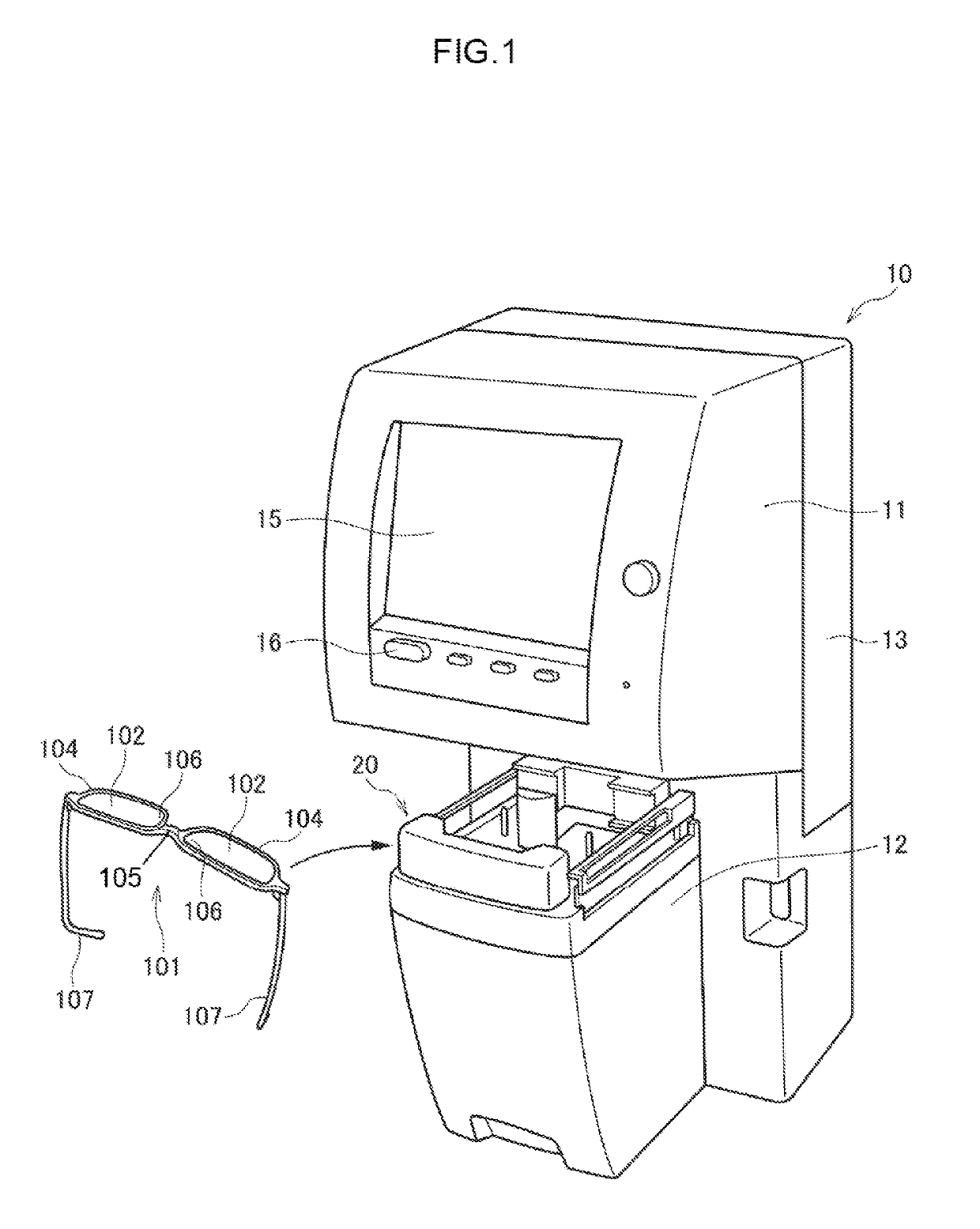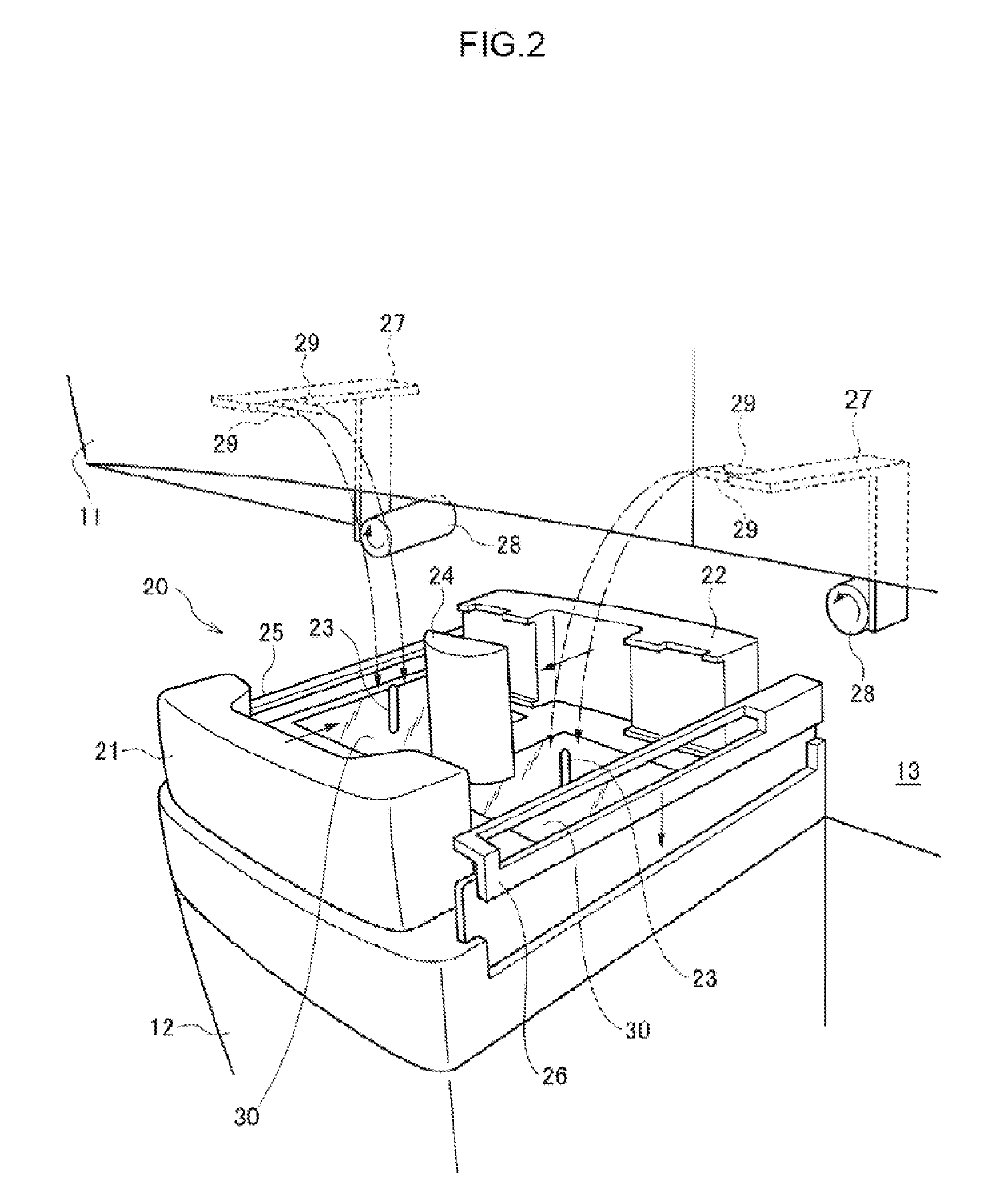Lens characteristic evaluation device and method of operating lens characteristic evaluation device
- Summary
- Abstract
- Description
- Claims
- Application Information
AI Technical Summary
Benefits of technology
Problems solved by technology
Method used
Image
Examples
second embodiment
Lens Characteristic Evaluation Device
[0131]FIG. 13 is a functional block diagram of an integrated control unit 58 of a lens characteristic evaluation device 10A according to the second embodiment. This lens characteristic evaluation device 10A according to the second embodiment has functions for carrying out setting of the scanning range and the scanning pattern of the linear luminous flux 46, and adjustment of the number of point images formed by the linear luminous flux 46 and included in one frame of the captured image 52.
[0132]As illustrated in FIG. 13, the lens characteristic evaluation device 10A according to the second embodiment has basically the same configuration as that of the lens characteristic evaluation device 10 according to the first embodiment, apart from the feature that the integrated control unit 58 functions as a scan setting unit 88 and a point image number adjustment unit 90. As a result, the same reference numerals and / or characters are given to those having...
third embodiment
[0141]Next, explanations will be provided herein on the lens characteristic evaluation device 10B according to the third embodiment (see FIG. 15). The scanner 42 in the above-described embodiments adjusts the scan angle of the linear luminous flux 46 by adjusting the swing angles θ, φ of the respective Galvano minors 42A such that linear luminous flux 46 is emitted for scanning in the two-dimensional directions. Note that the scan angle of the linear luminous flux 46 (which may also be referred to as an emission angle) is an angle of the linear luminous flux 46 emitted from the scanner 42, for example, if the respective. Galvano minors 42A are disposed at the swing center positions, i.e., an angle with reference to the reference direction that is parallel to the linear luminous flux 46 at the scanning center position of the scanner 42 (indicated by the dash-dotted line in FIG. 15) (the angle in the xy directions in FIG. 15).
[0142]In the course of this, in a certain type of the scann...
fourth embodiment
[0164]FIG. 18 is a functional block diagram of the lens characteristic evaluation device 10C according to the fourth embodiment. In this lens characteristic evaluation device 10C according to the fourth embodiment, the optical characteristic (mapping image) of the spectacle lens 102 is obtained using the measured values of the swing angles θ, φ of the respective Galvano mirrors 42A acquired by the measured value acquisition unit 410 explained in the third embodiment.
[0165]As illustrated in FIG. 18, the lens characteristic evaluation device 10C according to the fourth embodiment has basically the same configuration as that of the lens characteristic evaluation device 10B according to the third embodiment, apart from the fact that the integrated control unit 58 does not function as the correction unit 412 of the third embodiment (see FIG. 16) and the optical characteristic acquisition unit 70 functions as the mapping image generation unit 416. Therefore, the same reference numerals an...
PUM
 Login to view more
Login to view more Abstract
Description
Claims
Application Information
 Login to view more
Login to view more - R&D Engineer
- R&D Manager
- IP Professional
- Industry Leading Data Capabilities
- Powerful AI technology
- Patent DNA Extraction
Browse by: Latest US Patents, China's latest patents, Technical Efficacy Thesaurus, Application Domain, Technology Topic.
© 2024 PatSnap. All rights reserved.Legal|Privacy policy|Modern Slavery Act Transparency Statement|Sitemap



